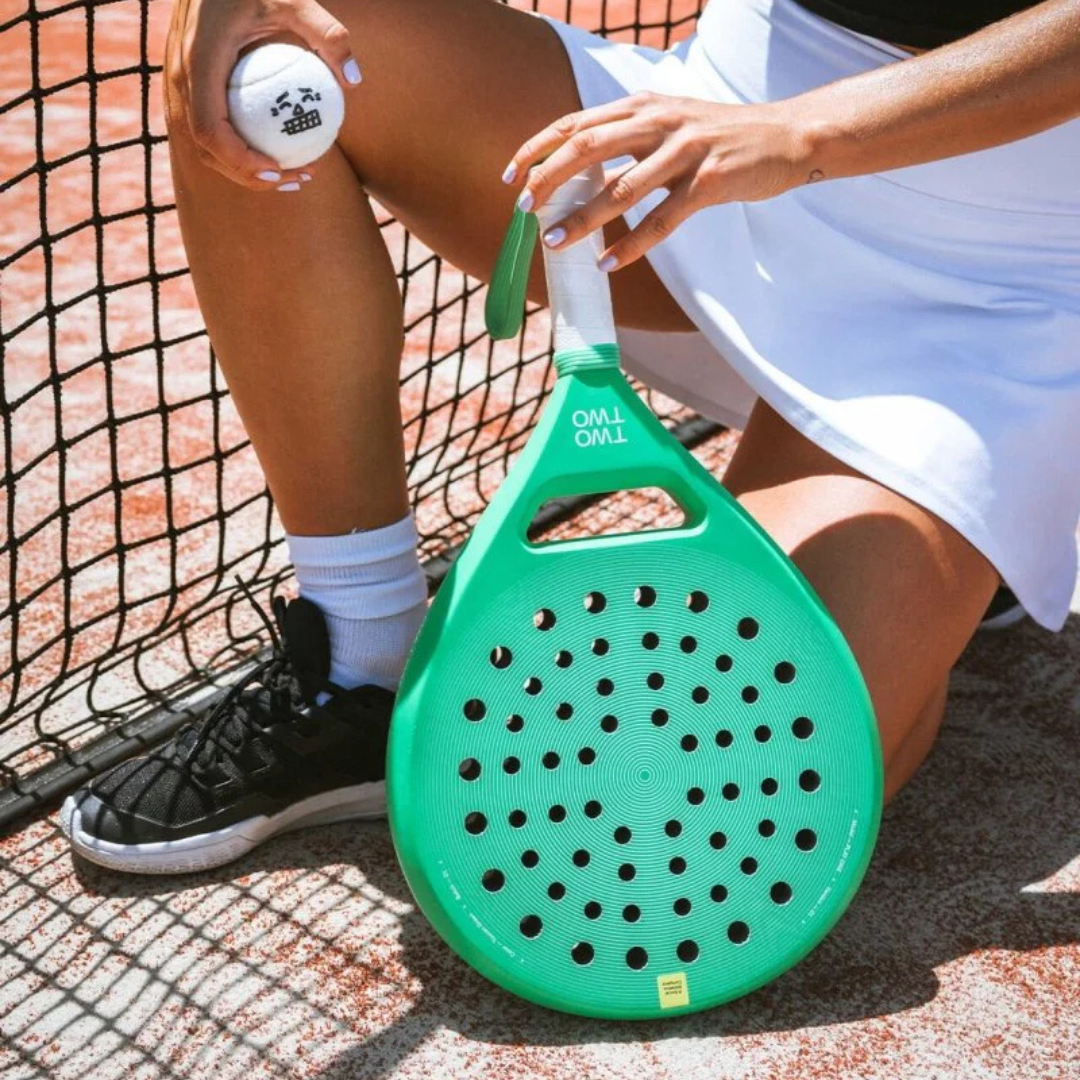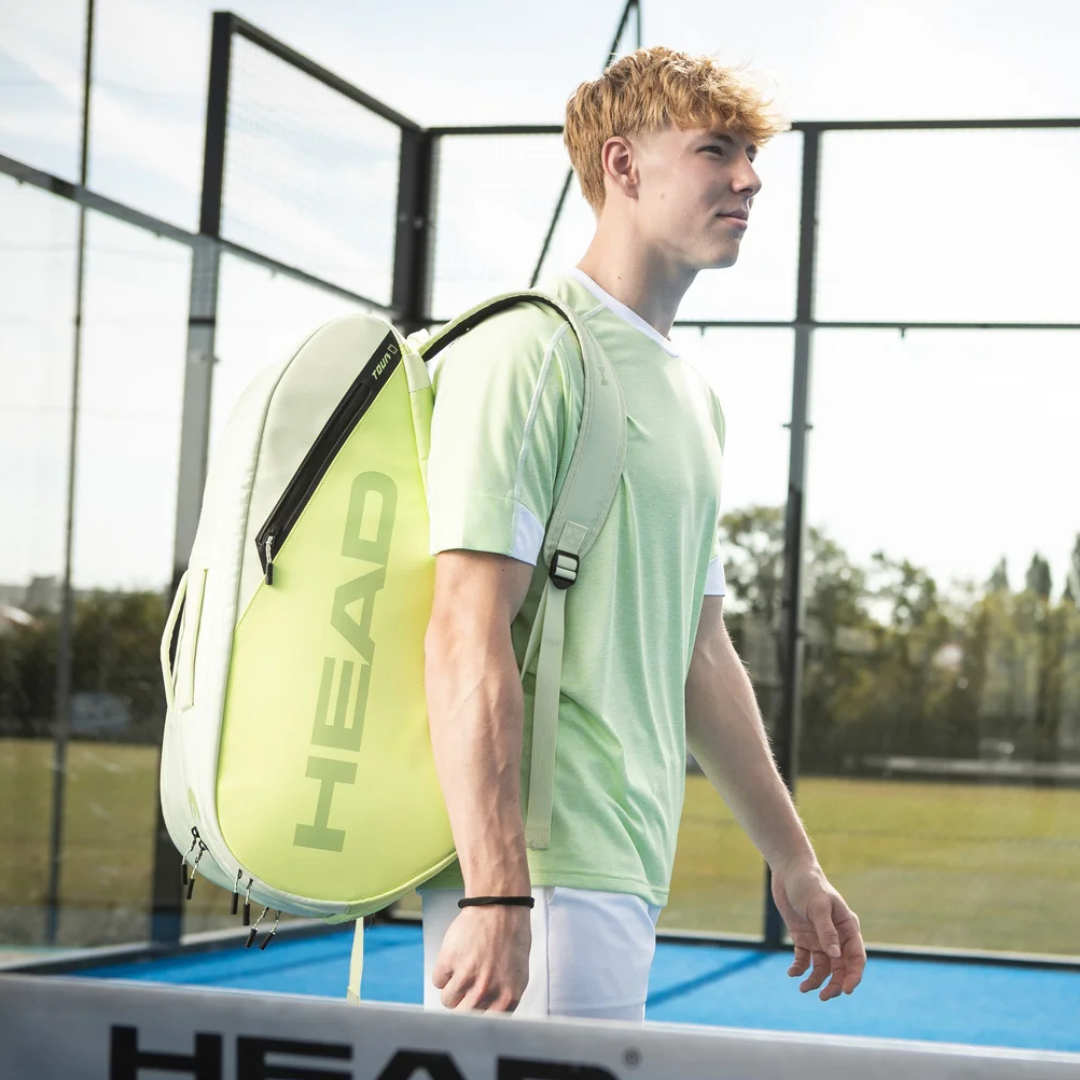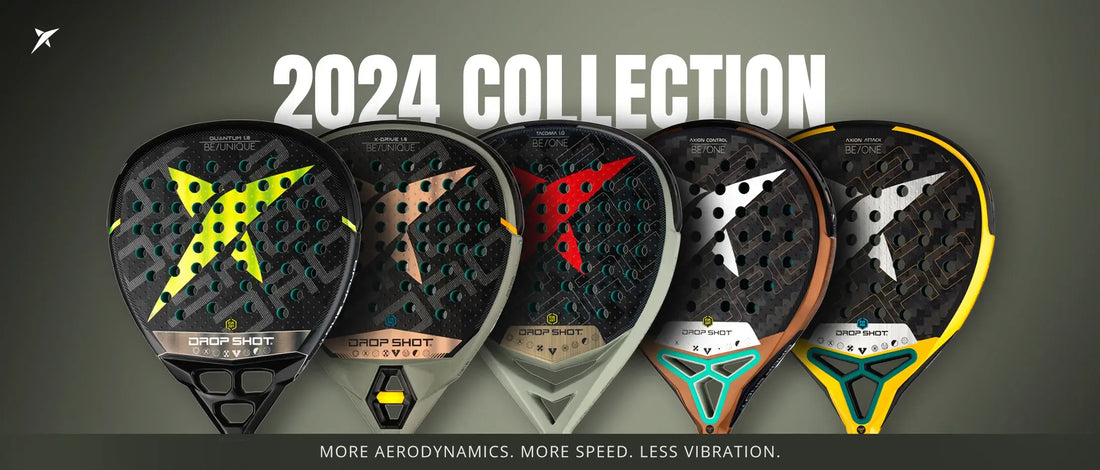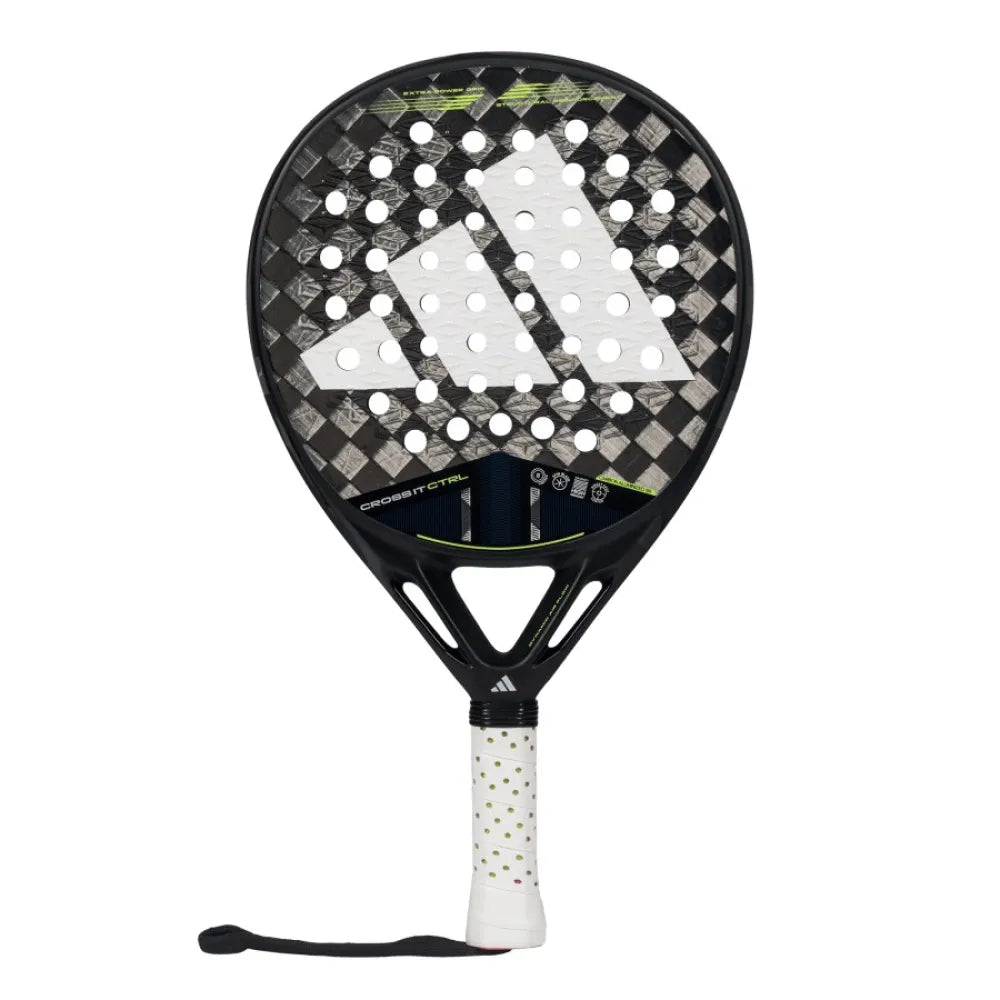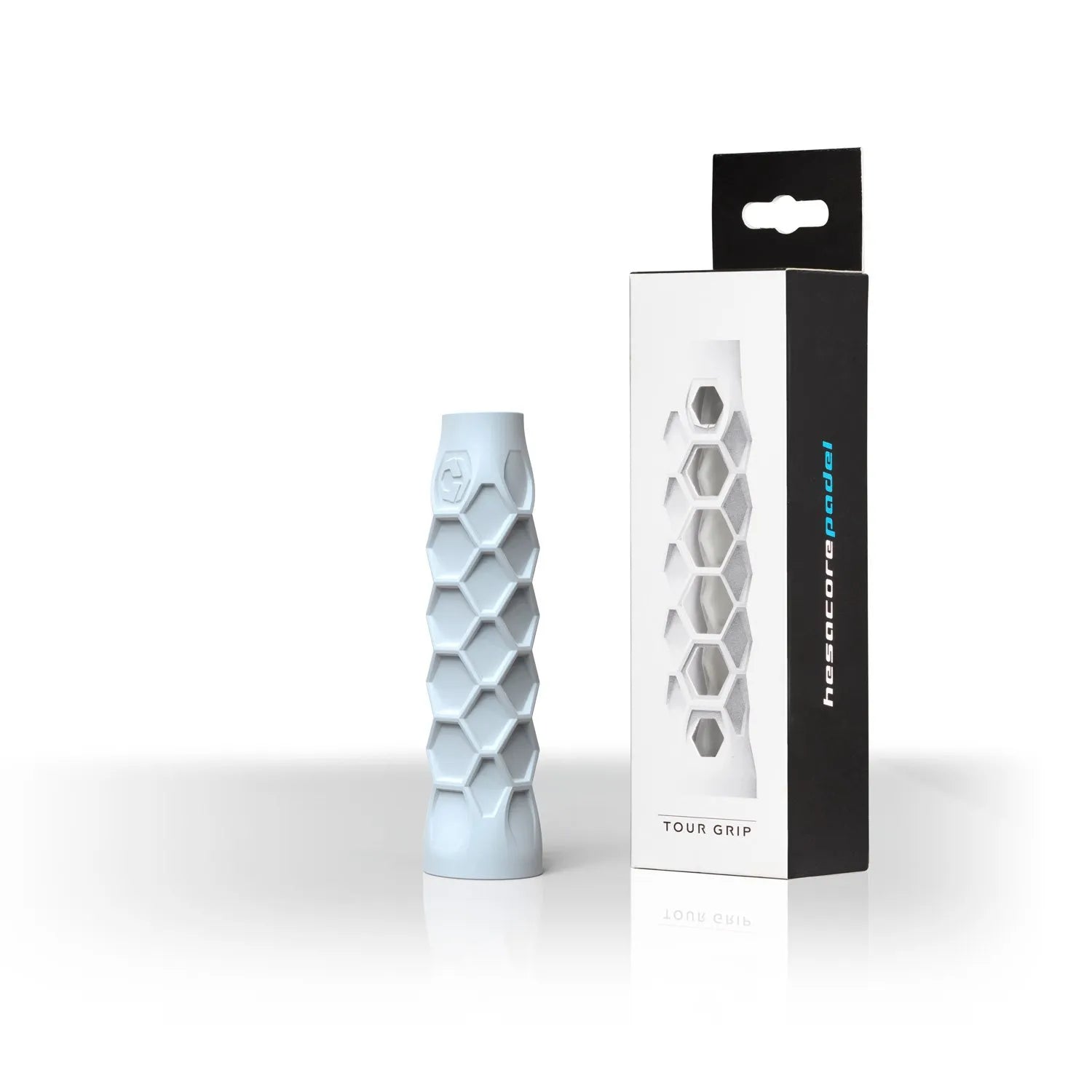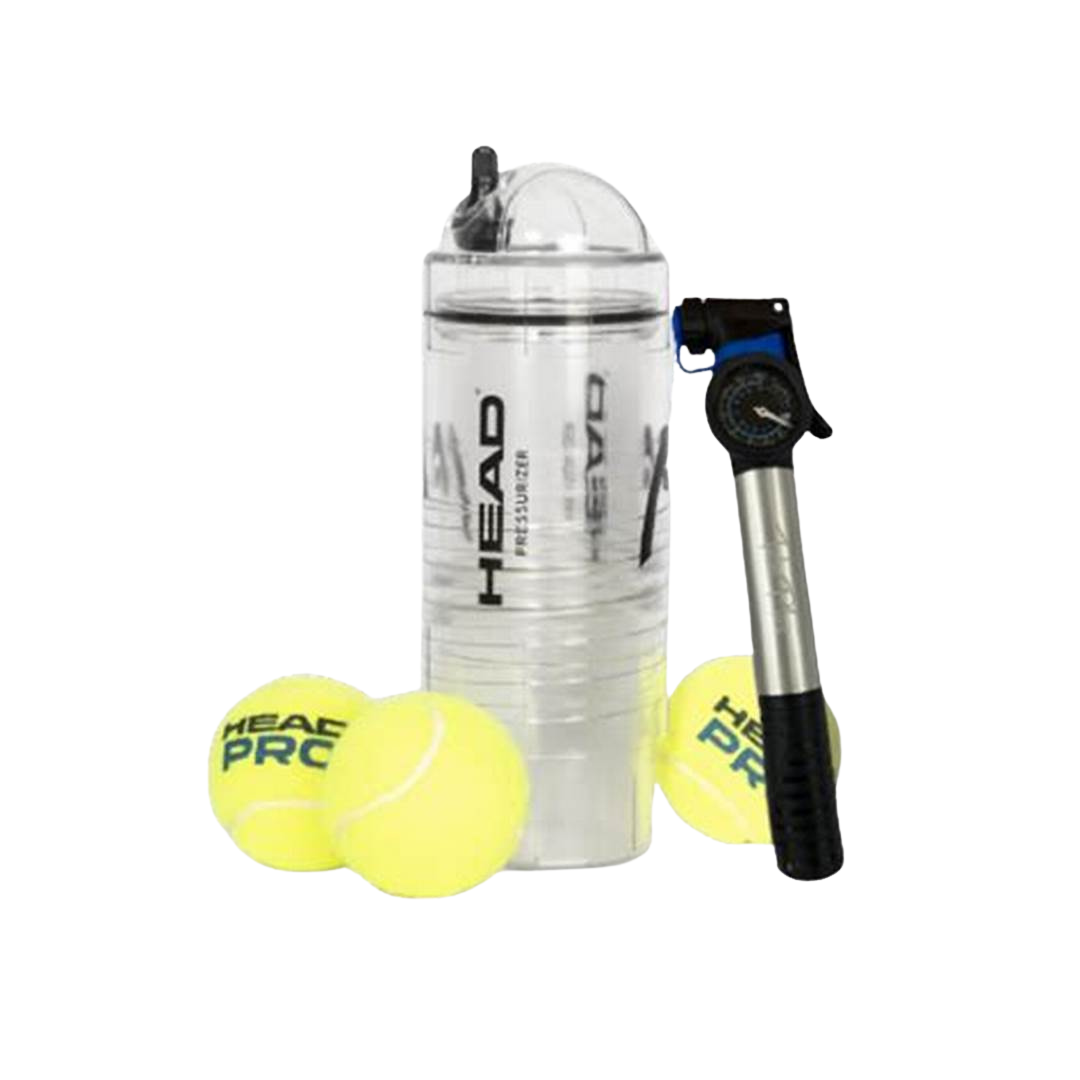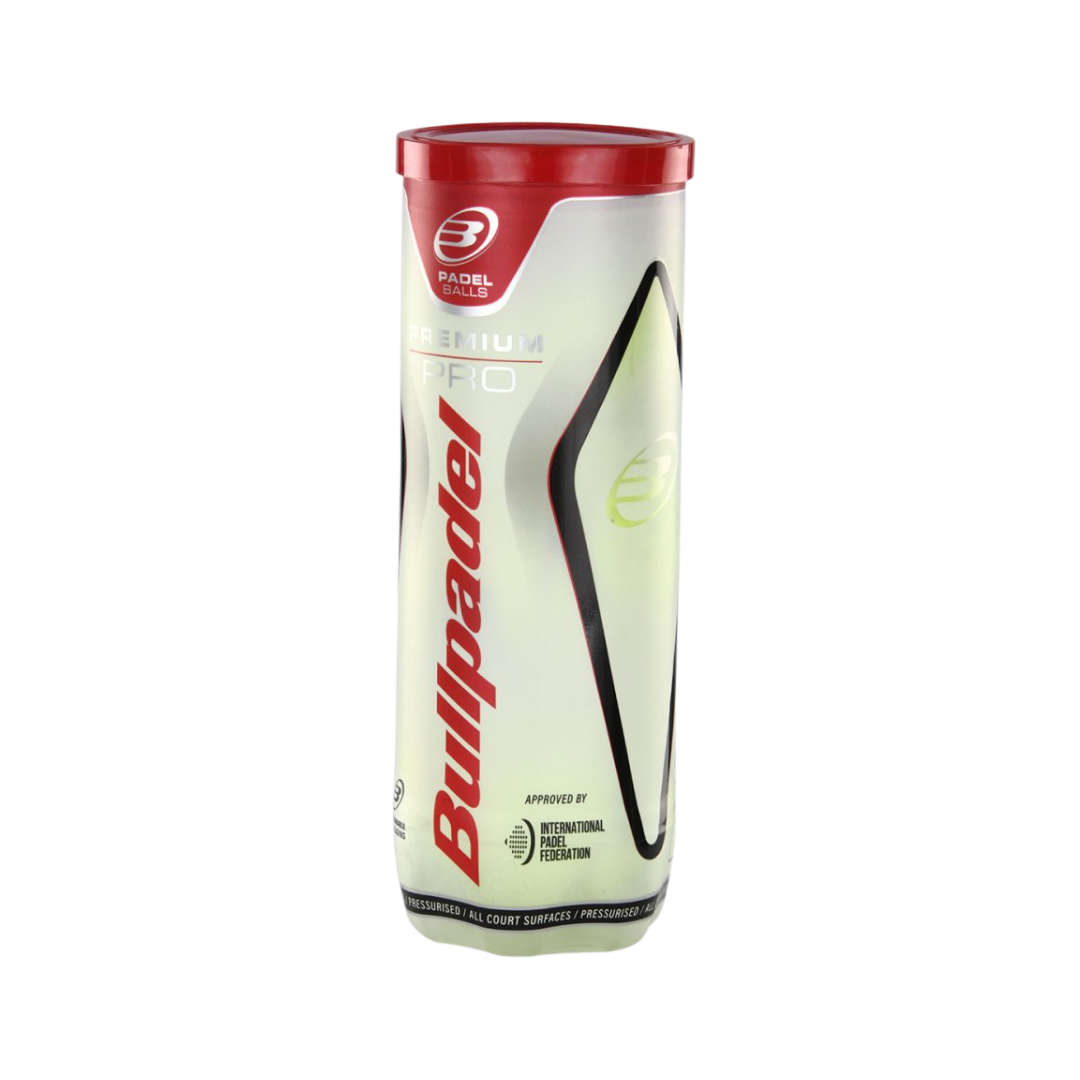Looking to find padel near me in Australia?
You're not alone. The sport is booming across Aussie cities, from Sydney to Perth. Whether you're a total newbie or a seasoned player, knowing where and how to start makes all the difference. This guide covers everything—from top padel locations to beginner tips and court booking advice.
Let’s get started!
Padel COURTS IN SYDNEY
TRIBE PADEL SYDNEY NORTH RYDE
16-18 Epping Rd, North Ryde
Sydney NSW 2113
T/.(02) 9888 7466
4 outdoor courts
INDOOR PADEL ALEXANDRIA
WHS 1C, 85 O’Riordan St Alexandria
Sydney NSW 2015
T/.0478 815 899
8 indoor courts + 2 outdoor
INDOOR PADEL NORTHERN BEACHES
Warehouse 1-4 Inman Rd, Cromer NSW 2099
T/. 0478 815 899
4 indoor courts
SYDNEY RACQUET CLUB
THE PADEL LOUNGE
PADEL CLUB NORTH ROCKS
Padel COURTS IN MELBOURNE
GAME4PADEL Docklands
‘Shed 21’, 194-206 Lorimer St,
Docklands VIC 3008
E/. docklands@game4padel.com.au
7 outdoor courts
GAME4PADEL RICHMOND
Victoria Gardens Shopping Centre, River BLVD. Richmond VIC 3121
E/. richmond@game4padel.com.au
2 outdoor courts
NORDIC PADEL
10-12 Carrick Dr,
Tullamarine VIC 3043
E/. info@nordicpadel.com.au
5 Indoor courts
iPadel Reservoir
Colosso World
Padel COURTS IN BRISBANE
PADEL BRISBANE @ The Gap
The Gap Health & Racquet Club, 200 Settlement Rd, The Gap 4061 (QLD)
E/. play@padelbrisbane.co
4 outdoor courts
PADEL BRISBANE @ Landers Pocket
40 The Cct, Brisbane Airport (Next to DFO). Hendra, 4008 (QLD)
E/. play@padelbrisbane.co
4 outdoor courts
Padel COURTS IN PERTH
PADEL WEST
Canning Hwy &, Stock Rd.
Melville WA 6156 (Perth)
T/. 0430 403 140
2 Outdoor courts
PADEL PERTH REABOLD
Reabold Tennis Club,
24 Oceanic Drive, Floreat WA 6014
T/. 0403 095 551
3 Outdoor courts
WEST COAST PADEL
Dalkeith Nedlands Bowling Club55 Jutland Parade Dalkeith WA
3 Outdoor courts
Other Padel COURTS IN AUSTRALIA
Canberra Racquet Club
18 Nyrang St.
Fyshwick, Canberra 2609 (ACT)
E/. canberra@racquetclub.com.au
6 indoor courts
SOL PADEL ALBURY
16 Evesham Place
Thurgoona 2640 (NSW)
E/. solpadelthurgoona@gmail.com
4 Outdoor courts
Padel Gold Coast
KDV Sports Centre
221 Nerang Broadbeach Rd. Carrara, Queensland 4211
E/. padelgc@kdvsport.com
5 Outdoor courts
TOWN PADEL COFFS HARBOUR
Padel Fit Adelaide
What to Expect at a Padel Court Near You
Equipment Rentals
No gear? No problem. Most venues rent padel rackets and padel balls for a small fee—perfect for first-timers.
Coaching Services
Beginner or advanced, lessons are usually available at most clubs. Coaches help with everything from grip technique to in-game tactics.
Booking Systems and Fees
Many clubs use mobile apps (like Playtomic) or their own online portals to manage the court bookings.
Expect to pay anywhere from AUD $20 to $60 per hour for a court. Some clubs offer weekly, monthly or yearly memberships. Reach out to your local club and learn more about the packages they offer.
Beginner Tips Before You Hit a Padel Court
Dress Code & Footwear
Wear tennis-style clothing and non-marking court shoes. Comfort and grip are key.
Game Rules Overview
Scoring is similar to tennis. The ball must bounce once before hitting the glass walls. Serves must be underhand.
Basic Etiquette
Rotate serves, encourage your partner, and avoid excessive celebrations. Sportsmanship matters!
Why Now Is the Best Time to Try Padel Near You
Padel isn’t just a trend - it’s a movement. With new courts popping up across Australia and communities growing faster than ever, there’s never been a better time to get started. Whether you’re looking for fitness, fun, or a new social outlet, finding padel near me in Australia is easier and more rewarding than ever.
So grab a racket, rally your mates, and hit the court. Your next obsession might just be a glass-walled court away!
Blog posts
What Is Padel Tennis? A Beginner's Guide to Australia’s Fast-Growing Sport
Imagine a sport that combines the best of tennis, squash and a touch of social fun—welcome to padel tennis. Fast-paced, easy to pick up and incredibly addictive, padel is taking the world by storm, and it’s no surprise why. Whether you’re a seasoned athlete or just looking for a new way to stay active, this dynamic game offers something for everyone. Played on a smaller court with walls in play, padel is all about strategy, teamwork and thrilling rallies. It’s not just a sport; it’s a lifestyle that’s perfect for Australia’s love of outdoor activities and social connections. So, why not grab a racket and see why millions are hooked? You might just discover your next favourite pastime. What Is Padel Tennis? Padel tennis combines aspects of tennis and squash, offering a unique playing experience. Players use solid, perforated rackets instead of stringed ones, which changes the dynamics of each shot. The court measures 20 metres by 10 metres and includes glass and metal mesh walls that keep the ball in play. This sport is always played in doubles, focusing heavily on collaboration and strategy. Scoring follows the same system as traditional tennis, ensuring familiarity for new players. The underarm serve adds a distinctive feature, making it accessible even for inexperienced players. With roots dating back to 1969 in Mexico, padel has gained traction globally, especially in countries like Spain and Australia. Its fast-paced, social nature makes it increasingly appealing to people of all skill levels. History Of Padel Tennis Padel tennis, a sport combining tennis and squash elements, has a rich history stretching back to the late 20th century. Its unique gameplay and social focus have contributed to its rapid global growth. Origins And Early Development Enrique Corcuera, a Mexican entrepreneur, created padel tennis in 1969. The sport emerged when Corcuera adapted his home environment, installing walls and limiting the playing area to control the ball. This new design introduced wall rebounds, which became a defining feature. The first formalised rules were established shortly after in Mexico. Padel gained momentum in Spain during the 1970s when Alfonso De Hohenlohe, who saw its potential while visiting Corcuera, built the first Spanish courts. From there, the game spread to Argentina and other Spanish-speaking countries, where it became an increasingly popular recreational activity. Rise In Popularity Worldwide Padel grew exponentially in popularity throughout the 1990s and the following decades. By the 2000s, Spain had solidified its reputation as the global hub of padel, boasting thousands of courts and millions of players. Clubs offered easy access to the sport, attracting players of all ages and abilities. Countries like Sweden, Italy, and the UK have contributed significantly to padel's expansion. In recent years, Australia and parts of the Middle East have also adopted the sport. Official global tournaments, such as the World Padel Tour, showcase the game on an international stage, aiding its recognition and appeal. Rules And Gameplay Padel tennis combines dynamic play and accessible rules, making it enjoyable for all skill levels. Both beginners and experienced players can engage with the sport's structured yet flexible gameplay. Court Dimensions And Equipment The padel court measures 20 metres by 10 metres, fully enclosed by walls that keep the ball in play. Solid walls, typically made of glass or metal mesh, allow for unique rebound shots that distinguish padel from traditional tennis. Courts have a marked service line, baseline, and a net dividing the two halves. Players use solid rackets with perforated faces instead of stringed tennis racquets. These lightweight, round or teardrop-shaped rackets enhance control and manoeuvrability. Padel balls look similar to tennis balls but are slightly less pressurised, creating slower shots and longer rallies. Scoring System And Basic Rules The scoring system matches that of tennis, starting with "love" and advancing through 15, 30, 40, and game. Matches follow a best-of-three sets format, with each set won by the first pair to win six games by a margin of two. If tied at six games each, a tiebreak determines the set. Every game begins with an underarm serve that must bounce before hitting the service box diagonally opposite. Serves must occur below waist height, and second serve opportunities follow if the first serve faults. The ball is valid if it bounces once on the court and can rebound off walls, making strategic placement and positioning critical. Teams consist of two players who alternate returns, focusing heavily on teamwork. A rally ends if the ball bounces twice, hits the net directly, or lands outside court boundaries without a wall rebound. These factors make tactics, communication, and precision important as part of padel's engaging gameplay. Key Differences Between Padel And Tennis Court size sets padel apart from tennis. A padel court measures 20 by 10 metres, significantly smaller than a standard tennis court, which spans 23.77 by 8.23 metres for singles. The walls of a padel court play an integral role in gameplay, allowing rebounds, unlike the open sides of a tennis court. Equipment creates another distinction. Padel rackets are solid, perforated, and slightly smaller, while tennis rackets feature stringed surfaces and longer handles. The ball used in padel is similar to a tennis ball but has slightly less pressure, affecting its bounce. Serving techniques further differentiate the two sports. Padel employs an underarm serve that begins below waist level, in contrast to tennis, where players typically execute an overhead serve. This underarm action simplifies the serve, making it accessible to beginners. Gameplay style highlights strategic differences. Padel involves doubles-only matches, emphasising teamwork, whereas tennis accommodates both singles and doubles matches. The enclosed walls in padel introduce angles and rebounds, requiring constant collaboration and quick reflexes. Traditional tennis focuses more on power and precision in open spaces. The accessibility level of padel is higher. Its slower ball speed, smaller court, and easier serve create an inviting entry point for new players, whereas tennis often involves a steeper learning curve. Both sports share the same scoring system, maintaining a sense of familiarity between them. Benefits Of Playing Padel Tennis Playing padel tennis improves cardiovascular fitness through its fast-paced rallies and constant movement. The sport enhances your agility and coordination as you navigate the smaller court, execute precise shots, and respond to rebounds off the walls. Unlike many sports, it fosters collaboration and communication because doubles format is key, strengthening teamwork and social connections. You can enjoy a more accessible athletic experience, as the underarm serve and slower ball speed make the game suitable for people of all ages and skill levels. Regular participation builds muscle strength, particularly in the arms, legs, and core, while supporting overall physical endurance. Shorter court dimensions also mean less strain on joints compared to larger sports fields. Mental sharpness develops as you implement strategies, anticipate opponent moves, and adapt quickly during matches. The game provides stress relief by combining physical exercise with engaging social interaction. Global growth in padel ensures increasing access to facilities, making it easier for you to practice, compete, and reap these benefits. Popularity Of Padel Tennis In Australia Padel tennis has seen rapid growth across Australia in recent years. Major cities such as Sydney, Melbourne, and Brisbane now feature dedicated padel courts, attracting players of varying skill levels. This rise can be credited to the sport's accessibility and social nature, which align with Australia's active outdoor culture. Established organisations and clubs have begun integrating padel into their facilities. Tennis Australia, the sport's governing body, actively promotes padel tournaments and events nationwide. Local clubs are also offering regular coaching sessions, fostering interest among younger players and recreational athletes. International exposure has contributed significantly to the sport's recognition in Australia. Events like the World Padel Tour and regional championships have inspired facilities to invest in padel infrastructure. Players travelling abroad have brought back enthusiasm, spreading awareness through communities. Corporate sectors are embracing padel as part of wellness initiatives. Many companies encourage employee participation by facilitating social leagues at padel venues. The compact court size and easy-to-learn rules make it an ideal choice for fostering connections in workplace settings. Padel's inclusive and engaging gameplay suits Australia's emphasis on group activities. Families, friends, and colleagues increasingly book padel courts for social gatherings and fitness. This shared enjoyment continues to elevate its appeal and cement its place in Australia's sporting culture. Conclusion Padel tennis offers a unique blend of fun, strategy, and accessibility that appeals to players of all ages and skill levels. Its emphasis on teamwork and social interaction makes it more than just a sport—it’s a community-driven experience. Whether you’re looking to stay active, build connections, or try something new, padel provides the perfect balance of challenge and enjoyment. With its growing global presence, now’s the ideal time to pick up a racket and join the excitement.
Learn morePadel Courts And Clubs
Discover the best padel courts near you in Australia. This guide shares top clubs, costs, tips, and more to enjoy padel near me!
Learn moreTop Padel Rackets of 2025: Ultimate Guide for Beginners to Pros
If you're on the hunt for the perfect padel racket, you've landed in the right place. As 2025 unfolds, a new wave of technology and design is revolutionizing the world of padel, promising enhanced performance and precision on the court. Whether you're a seasoned player or just getting started, the right racket can make a world of difference. Let's dive into the latest and greatest offerings of 2025, exploring the top contenders that are turning heads and winning games. Key Takeaways There are three types of padel rackets: round shape rackets for superior control, diamond shape rackets for power, and teardrop shape rackets for versatility. Each type serves unique gameplay requirements and player skill levels. For beginners, the recommended racket type is round shape due to its excellent control qualities. Key considerations for beginners include soft foam core, weight balance, and quality grip. Top rackets for beginners in 2025 include Adidas Adipower Lite 3.3, Head Zephyr Pro, Bullpadel Flow Proline, and Dunlop Inferno Elite LT. Intermediate players benefit from teardrop shape rackets, offering a balance between control and power. Top rackets for intermediate players in 2024 include the Siux Pegasus, Head Speed Motion, Wilson Bela LT V2.5, and Babolat Air Viper. Professional players need rackets that offer excellent balance, and a firm grip. Top pro rackets for 2025 include StarVie Astrum Eris Black, Siux Origen Pro, Nox ML10 Pro Cup, and Adidas Adipower Multiweight Ctrl. Material construction, weight and balance, and grip comfort are essential features to consider when buying a padel racket. These factors vary greatly among rackets and significantly impact the style and overall performance of a player. Proper maintenance of padel rackets, including regular cleaning and timely replacement, prolongs their lifespan and ensures consistent performance. Recognizing when to replace a worn-out racket is critical to prevent gameplay limitations and potential injuries. Types of Padel Rackets In your quest for better gameplay in 2025, understanding the types of rackets at your disposal is essential. I'll guide you through three primary types, each serving a distinct purpose, designed to elevate your game to the next level. Round Shape Rackets for Control The round shape rackets are all about superior control. These rackets have a wide sweet spot centered in the middle, which provides you with superior command over your shots. For example, if you're a player who prioritizes precision over power, the round shape will be your go-to choice. They are an excellent pick, especially if you're a beginner or have a defensive playing style. Diamond Shape Rackets for Power Next up, we have the diamond shape rackets. These are for the power hitters out there. The sweet spot is positioned higher, making them harder to control but delivering a powerful punch to your shots. If you're an aggressive player or have an offensive approach to the game, the diamond shape is sure to be your best ally on the court. Teardrop Shape Rackets for Versatility Finally, the teardrop shape rackets fall right in the middle. They offer a balance between control and power. Their sweet spot is slightly higher than the round but lower than the diamond ones, providing a good compromise. These are great for players who value versatility in their gameplay or aren't sure whether they prefer control or power. They're also the safest bet if you're transitioning between different skill levels. Top Padel Rackets for Beginners in 2025 So, you're just starting your Padel journey and want to make the right racket choice? Perfect, you're in the right place. Let's deep dive into this. Features to Look for in Beginner Rackets When you're new to Padel, you need a racket that'll make your learning journey smooth. Here are must-have features for beginners: Round Shape Rackeet: Round shape racket offers the best control, making it an ideal starting point for beginners. Remember, control trumps power while learning. Soft Foam Core: Racket hardness impacts the feel and control of the game. I'd recommend a racket with a soft foam core for comfortable handling and adequate rebound. Weight Balance: Aim for a balanced racket weight. You don't have to wrestle with an overly heavy racket. Quality Grip: A premium grip ensures you handle the racket with ease and comfort. It's vital in avoiding blisters and wrist strain. Reviews of Top Beginner Models Now that you know what to look for let's discuss some leading beginner models in 2025: Adidas Adipower Lite 3.3: Known for its exceptional control and precision, this racket let's beginners master their technique quickly. Head Zephyr Pro: It offers a soft foam core and a balanced weight structure, making it a favorite among new players. Plus, it boasts zephyr's signature design, adding a stylish touch. Bullpadel Flow Proline: This model is loved for its quality grip and round shape, a perfect combination for beginners looking for balance and comfort on the court. Dunlop Inferno Elite LT: Dunlop has outdone itself with this racket providing a softness that is unmatched, offering precision control for newcomers. Best Padel Rackets for Intermediate Players 2025 Intermediate players require a different breed of rackets; ones that blend precision control with deliberate power. Let's dive into the specifics and discover what these rackets have to offer. Characteristics of Intermediate Rackets As an intermediate player, you'll need a racket that challenges your skills and progresses you toward higher levels of play. Typically, intermediate rackets have teardrop shapes, providing the best of both worlds - control and power. These rackets strike a balance between the two extremes of the round and diamond shapes, empowering intermediate players with versatile game-changing strategies. Additionally, they generally feature a firmer foam core with superior elasticity, offering increased response and control while reducing vibration on tougher shots. Siux Pegasus: This luxury racket not only has a stunning design, but it also promises excellent performance and durability. A perfect blend of control and power should make this your go-to racket as an intermediate player. Head Speed Motion: This racket is popular for its optimum sweet spot, providing excellent power coupled with good control. Plus, its graphene construction boosts potential energy while reducing vibration. Wilson Bela LT V2.5: A beloved choice amongst intermediate players for its precise balance between power and control. The Pro Staff exhibits a splendid ability to adapt to various playing styles, displaying resiliency and consistency at every turn. Babolat Air Viper: An exemplary racket for those seeking an edge in power while not compromising control. The Air Viper has been praised for its comfortable grip and maneuverability, adding another layer of precision to your game. Bear in mind that your choice of racket could significantly impact your gameplay. It's always advisable to test-drive a few options before finally settling on the one that resonates with your playing style. Advanced Padel Rackets for Pros in 2025 When it comes to advanced gameplay, the padding on the racket's surface and its weight distribution are paramount. Let's take a deeper dive into these pro-level rackets that advanced players will be swinging in 2025! What Makes a Pro-Level Racket? When you're a pro, a generic racket just doesn't cut it. A pro-level padel racket exudes quality in every stitch, offering perfect balance, and a firm grip. It's primarily known for its excellent response, high performance and, most importantly, ability to cater to a player's unique style. Superior construction is a hallmark of a pro-level racket. Here's what sets them apart from others: Proprietary Material: Pro rackets are generally made of more higher-quality materials such as carbon fiber, enhancing durability and reducing the chance of breakage. Exceptional Balance: In the hands of a pro, these rackets are an extension of their arm, delivering superb balance and maneuverability. Advanced Technology: Equipped with the latest tech, pro-level rackets ensure an edge in the court. Whether it’s improved shot precision or specialized grip design, every bit of technology matters. Player’s Personal Preference: Each pro has a unique way of playing, and these rackets cater to those nuances, taking customization to the next level. Best Models for Professional Players Ready to step up your game? Here are the top pro padel rackets for 2025: StarVie Astrum Eris Black: Known for its two layers of carbon 3K composition, this racket enhances control and shock absorption, promising less strain on your hands even after long games. Siux Origen Pro: Boasting an impressive aerodynamic design, the Origen Pro provides stellar maneuverability during fast-paced matches. Nox ML10 Pro Cup: Endorsed by the world champion 'Miguel Lamperti', this racket stands out for its round shape and balance, offering a killer combination of power and control. Adidas Adipower Multiweight CTRL: This racket's low density, soft performance foam enhances the sweet spot, ensuring you land your shots precisely every time. Key Features to Consider When Buying a Padel Racket Having unearthed the nuances of various padel rackets ideal for players at different levels, let's dig deeper into the key features you need to be keen on when purchasing a racket. These features, from material construction to grip comfort, directly influence your individual playing style and overall game performance. Material and Construction The material and how a padel racket is built profoundly impacts its overall performance. Primarily, most rackets feature a triad of components - frame, face, and core. The durability and performance of a racket depend extensively on the materials used in these parts. For example, in high-end rackets, like the Star Vie Basalto or Nox ML10 Pro Cup, you'll often find a carbon-composite frame, known for its resistance and longevity. The face, often constructed from fiber (such as carbon, glass, or basalt fiber), directly affects the racket's control and power attributes. The core is typically made from EVA foam or polyethylene, with each offering a different level of hardness and thus influencing control and power output. Weight and Balance The weight of the padel racket and its balance point are two essential features that can significantly affect your overall gameplay. Padel rackets range from 350g to 400g, and though it's a mere difference of 50g, the impact on your game can be drastic. A heavy racket, let's say one around 400g, ensures added power but can strain your arms over prolonged play, leading to potential injuries. A lighter racket, on the other hand, provides great maneuverability but might lack in power. The balance point, whether toward the head or the handle, can also influence power and control. For intermediate players who need a blend of control and power, a well-balanced racket like the Head Graphene 360+ Delta Hybrid is a prime choice. Grip and Comfort The grip of your padel racket must not be overlooked. Ensuring comfort and control during gameplay, the right grip size can reduce the risk of arm injuries and improve your shots' precision. The grip should ideally fit securely in your hand, providing a firm yet comfortable hold. Various rackets offer adjustable grips, enhancing individual comfort level. For beginners, for instance, a racket with a larger grip size, such as the Siux Pegasus, may provide a confident hold during mastering basic swinging techniques. By understanding these crucial features, you're ready to choose the perfect padel racket to suit your individual playstyle and pave your path towards a superior performance on the court. Importance of Racket Maintenance Just as choosing the right padel racket is key to your gameplay, so is maintaining that racket. Let's delve into the means of preserving this crucial gear. Regular Cleaning and Care Whether owning the Nox ML10 Pro Cup or the Siux Pegasus, one thing's consistent - keeping your racket clean and well-maintained boosts its life span and performance. Regular cleaning prevents dirt and sweat build-up, which can hinder grip and overall performance. After each play, wipe down the racket with a damp cloth. If you find stubborn grime or sticky residues, use a mild soap solution. Avoid harsh chemicals as these could affect the racket materials adversely. Regularly check for worn-out grips and replace them timely, ensuring a comfortable and stable hold during play. When to Replace Your Padel Racket Knowing when to retire your paddel racket is vital. Usually, a racket may last anywhere from 1 to 3 years, depending on usage and care. However, don't hold onto it for grim death. If you start noticing consistent dips in performance, like decreased hitting power or control, it might be time for a change. Cracks or significantly worn-out spots on the hitting surface are also signs that it's time to upgrade. Remember, a worn-out racket can limit your gameplay, make it hard to learn new techniques, and even cause injuries due to overcompensation. So, stay safe and play smart – be ready to bid adieu when the time comes. Conclusion You've now got the lowdown on the best padel rackets of 2025. Whether you're a beginner, an intermediate player, or a seasoned pro, there's a racket out there that's perfect for your game. Remember, the Babolat Air Viper and Nox ML10 Pro Cup are just a couple of the top-notch choices available. But it's not all about buying - it's about maintaining too. Regular care, like cleaning and grip replacements, will extend your racket's life and keep you at the top of your game. And don't forget, knowing when it's time for a new racket is just as important. So, stay on top of your game and keep these tips in mind as you navigate the world of padel rackets in 2025.
Learn more

